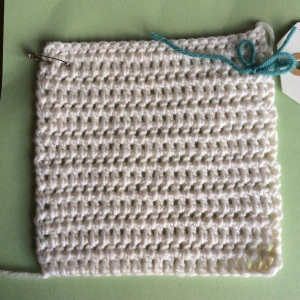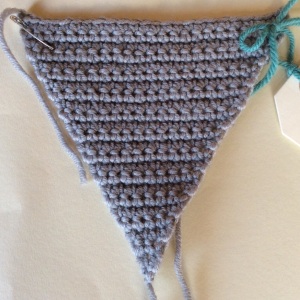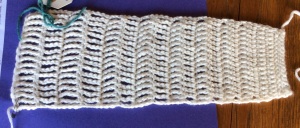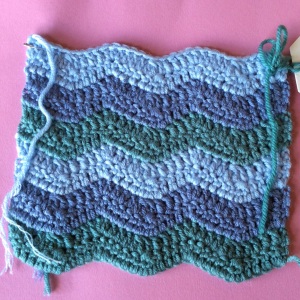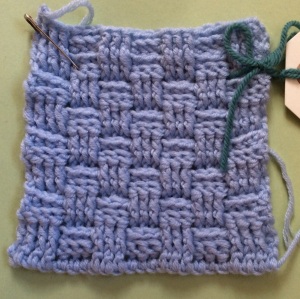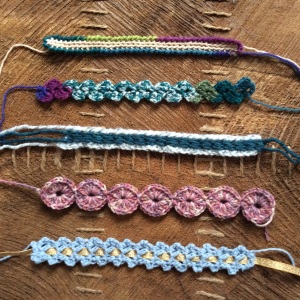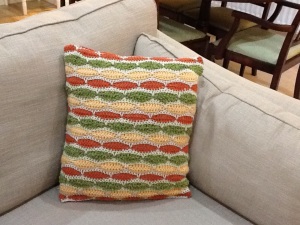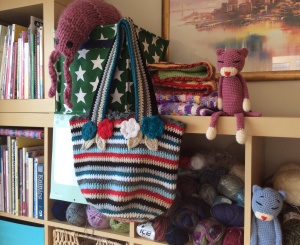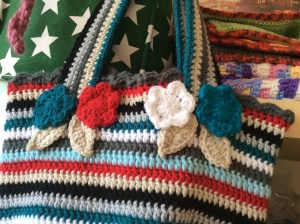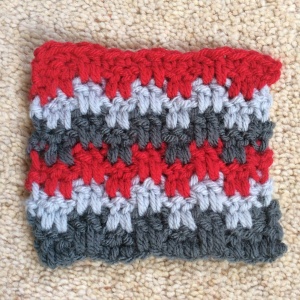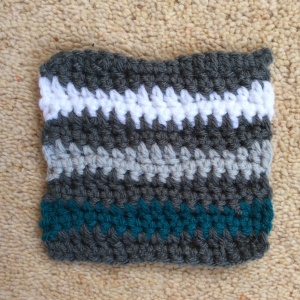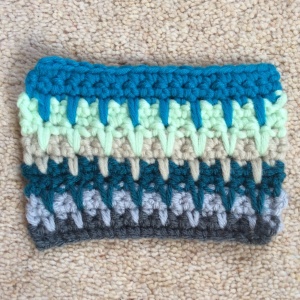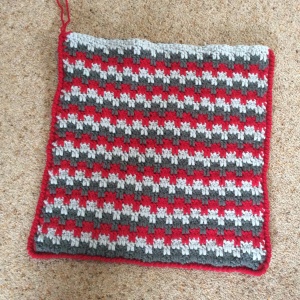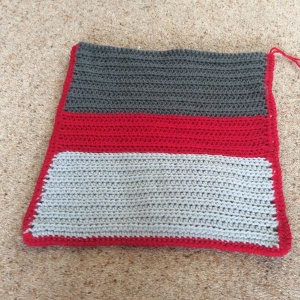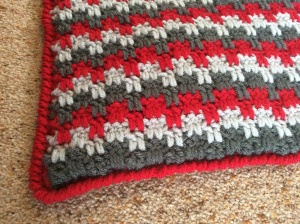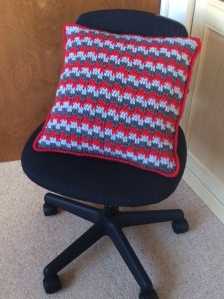Hello,
Last September my lovely crochet group said that the area of crochet in which they felt least secure was working from charts. So, I decided that the time had come to put them through their paces; I know from experience how helpful it is to have the facility to locate a stitch on a chart and see where it lies in relation to the rest of a piece of work. Increasingly crochet patterns offer both written and charted instructions … unlike some of the vintage crochet designs which can be so offputting.
Throughout the autumn my ladies hooked their way through more than eighty squares of different colours and textures, working both in rows and in the round without using a single written instruction. They worked from a variety of stitch pattern charts that I had been able to print off or draw out – linen stitch, trinity stitch, blackberry salad, “v”stitch, iris stitch, shells and fans, clusters, bobbles and popcorns to name but a few – until they had crochet symbols coming out of their ears!
I could not bear to think of all that hard work lying unused in box somewhere and so, in January, the decision was made to join the squares. Nine ladies each undertook to join nine squares which were then crocheted together to form a bright and cheerful afghan.
Disparate square size was a bit of an issue but we overcame that by using a flexible zig-zag join and I imposed some rather agressive blocking and steaming! The central border, created initially to enlarge that particular square, is repeated around the outer edge.
I am so pleased with the result and really hope that the exercise has given my group the extra confidence needed to take on future projects.
It is amazing just how many of my group at the start of the project were convinced that they would not be able to use charts but now they find them easier to follow than the written words and abbreviations.
Well done everybody … be proud of yourselves. I am proud of all the perseverance, effort and hard work you put into your work.
What next? Who knows … the sky’s the limit!
Happy crafting,
Jenny x





